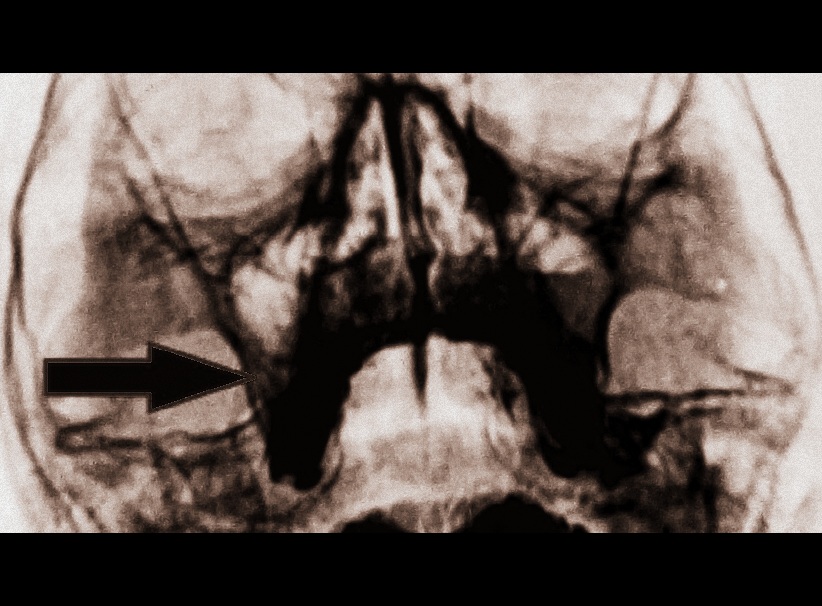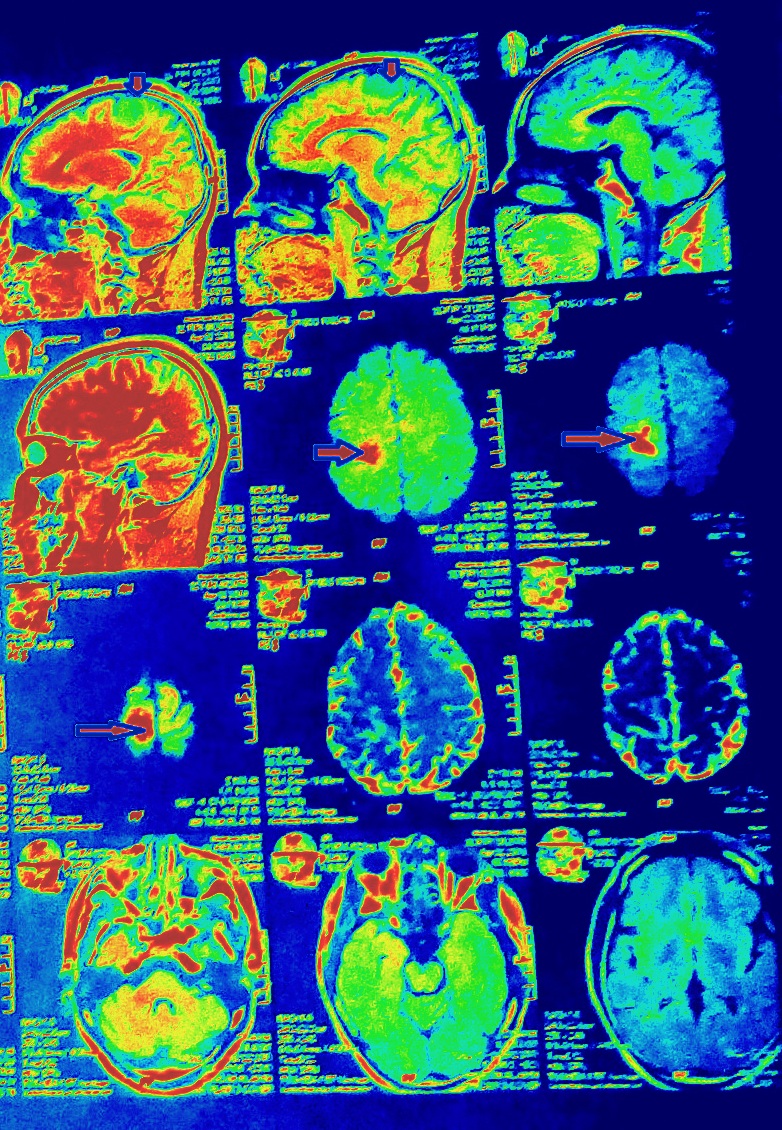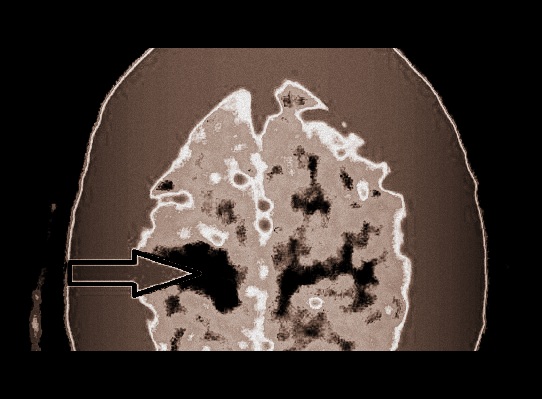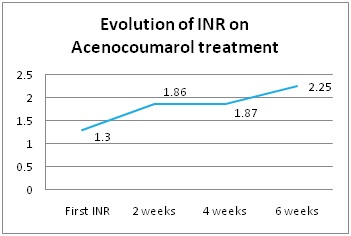Indexing & Abstracting
Full Text
Case ReportDOI Number : 10.36811/ojor.2019.110002Article Views : 2480Article Downloads : 37
Cerebral venous thrombosis secondary to an occult maxillary sinusitis in a young male from sub-Saharan Africa
Mazou N Temgoua1*, Mickael Essouma1, Larry N Tangie1, Cedric Tsinda1, Drusille Feze Foko2 and Celestin Danwang3
1Departement of Internal medicine and specialities, Faculty of Medicine and Biomedical Sciences, University of Yaoundé I, Cameroon
2Internal Medecine Department, General Hospital of Yaoundé, Cameroon
3Departement of Surgery and specialities, Faculty of Medicine and Biomedical Sciences, University of Yaoundé I, Cameroon
*Corresponding author: Dr TemgouaNgouMazou, MD, MPH, Departement of Internal medicine and specialities, Faculty of Medicine and Biomedical Sciences, University of Yaoundé I, Yaoundé, Cameroun, Email: neurotemgoua@yahoo.fr
Article Information
Aritcle Type: Case Report
Citation: Mazou NT, Mickael E, Larry NT, et al. 2019. Cerebral venous thrombosis secondary to an occult maxillary sinusitis in a young male from sub-Saharan Africa. Open J OtolaryngolRhinol. 1: 08-12.
Copyright:This is an open-access article distributed under the terms of the Creative Commons Attribution License, which permits unrestricted use, distribution, and reproduction in any medium, provided the original author and source are credited. Copyright © 2019; Mazou NT
Publication history:
Received date: 09 January, 2019Accepted date: 21 January, 2019
Published date: 22 January, 2019
Introduction
Cerebral venous thrombosis (CVT) also termed cerebral venous sinus thrombosis (CVST), is a special type of cerebrovascular disease characterized by cerebral venous infarction [1]. As from 1825 when the first case was described by Ribes[2], epidemiological descriptions are still restricted to case reports and small retrospective cross-sectional studies yielding low butincreasing incidence: <10 cases per million per year in 1995 to about 13.2 cases per million per year in 2012.CVT mainly occurs in women of child bearing age, probably owing to the use of oral contraceptive pills, and mostly has an acute or subacute course [1]. It can be categorized as primary/idiopathicand secondary. Secondary CVT can further be classified into infective (mainly due to bacterial or fungal infections) and non-infective CVT; the latterbeing due tocoagulation disorders, neoplasms, procoagulant hemodynamic states, vascularitis,homocystinuria, or head trauma [3].With the advent of antibiotics, the epidemiology of CVT has shifted from predominant infective CVT to predominant non-infective CVT, leading to increased risk of misdiagnosis and delayed treatment [3]. We report occult purulent maxillary sinusitis-related CVT in a male Cameroonian patient who presented with headaches, seizures and acute stroke syndrome. The aim of this paper is to reiterate CVT as the main cause of acute stroke syndrome in young adults irrespective of ethnic origin and sex, and suggest systematic screening of infections in those patients, especially in regions with high rates of infections likesub-Saharan Africa.We describe this case with regard to CARE guidelines.
Case presentation
A 36-yearold male patient with no contributive past history was admittedin a hospital for a rapidly progressive onset of left side deficit associated with repetitive focal left-size tonicoclonic seizures lasting for 3 minutes and moderate intermittent frontal headache. These symptoms progressed since24 hours before admission without fever or any other signs of intracranial hypertension.
Upon admission, physical examination revealed:normal vital parameters, left cortical-type pyramidal syndrome with brachio-facial predominance (muscular strength of 3/5 in the upper limb and 4/5 in lower limb), tactile hypoesthesia in the left side, normal ENT examination.
Based on this examination, we discussed a diagnosis of space occupying lesion or stroke. Cerebral CT-scan revealed a right fronto-parietal hypodensity which did not respect any vascular topography and this lesion was not enhanced with contrast (Figure 1). Subsequent cerebral magnetic resonance imaging (MRI) confirmed a cerebral venous thrombosis (Figure 2). On etiological work up, sinus radiograph revealed a right maxillary sinusitis (Figure3). Biological exams showned a slight elevated white blood cells of 10 800 per mm3 with neutrophiles predominance at 81%, Prothrombin level=96.6% (international normalize ratio [INR] 1.3), Kaolin clotting time=27.5 s (witness time: 35 s), negative HIV serology, D-dimers=3886.61 ug per liter, C protein=117% and Sprotein=67%.
Finally, our working diagnosis was cerebral venous thrombosis secondary to a maxillary sinusitis. The patient was managed symptomatically by physiotherapy, analgesics paracetamol 3g per day, anticonvulsants diazepam: 20 mg per day. For the etiology drainage of maxillary sinus was done and the patient received 3g of amoxicilline and clavulanic acid per day. Acenocoumarol was used for anticoagulation at initial dose of 1mg per 24 hours, secondary adapted for International Normalized Ratio (INR) with a goal of 2-3, this goal was reached after 6 weeks of follow up (INR=2.17) with a daily dose of 5mg. The variation of INR through follow-up period can be observed in figure 4.
Figure 1: Cerebral CT-scan showing cerebral venous infarction.

Figure 2: Cerebral MRI showing cerebral venous infarction.

Figure 3: Sinus radiograh showingright maxillary sinus abcess.

Figure 4: Evolution of INR on Acenocoumarol treatment.

Discussion
This case describes a male patient with cerebral venous thrombosis (CVT) due to an inexpressive maxillary sinusitis. CVT is an acute or subacute disease of the central nervous system that often affects women of childbearing age, and children[1]. Its incidence varying between 1.32-1.57 per 100,000 person-years[4,5]. The disease is known more prevalent in women than men because of the high rate of contraceptive use that create a procoagulant status in this population [1]. Others risk factors include coagulation disorders, neoplasms, vascularitis,homocystinuria, head trauma and infections [3]. In developed countries,this last condition becomes less frequent with the advent and adequate use of antibiotics [3].
Sinusitis is define as infection of sinus; it’s a common cause of infection related CVT [3]. The pathophysiology is directly by causing septic thrombosis or indirectly by precipitating thrombosis in people who have a prothrombotic condition; this is explain by cytokines inducing endothelial lesion.It’s well known that the dural sinuses and the cerebral and emissary veins have no valves, which allow blood to flow in either direction according to pressure gradients in the vascular system. This makes these venous systems vulnerable to septic thrombosis resulting from spreading of infection from adjacent locations[3].Maxillary sinusitis is rarely involved in CVT than sphenoidal and ethmoidal sinuses and clinical presentation associate facial pain, rhinorheaandtenderness of the maxillary sinus [3,6]. Our patient was asymptomatic and it was difficult to clinically evoke this etiology. In the other hand the current diagnostic guidelines do not mention the systematic screening of CVT etiology by doing sinus radiography [7]. In the lack of evidence our approach was guided by the biological exam showing slightly elevated neutrophiles which suggesting the bacterial etiology.
To the best of our knowledge, the association of occult sinusitis and CVT was not describe in the literature, making this case an original one.
In Subsaharan African context with high burden of infection it may be necessary to systematically investigate sinusitis when any apparent cause of CVT is found.
Conclusion
CVT is a common cause of stroke in children and young adults. In sub-Saharan Africa, and infectious etiology should be considered and rollout before any other consideration.
Abbreviations
CVT cerebral venous thrombosis; CVST cerebral venous sinus thrombosis; INR international normalize ratio; MRI magnetic resonance imaging
Declarations
Acknowledgments
The authors are solely responsible for this manuscript preparation and decision to submit it for publication.
Funding
The authors declare that all data concerning this case report are provided within the manuscript.
Authors’ contributions
MNT, ME, LNT, CT, DFK, CD managed the patient. MNT drafted the initial manuscript which was modified by ME, LNT and CD. All authors read and approved the final manuscript.
Consent for publication
Written informed consent was obtained from the patient for publication of this case report and any accompanying images. A copy of the written consent is available for review by the Editor-in-chief of this journal.
References
- Luo Y, Tian X, Wang X. 2018. Diagnosis and treatment of cerebral venous thrombosis: a review. Front. Aging. Neurosci. 10: 1-15.[Ref.]
- Ribes M. Des recherchesfaites sur la phlébite. Revue MédicaleFrançaise et Etrangère et Journal de Clinique de l’Hôtel-Dieu et de la charité de Paris. 3: 5-41.[Ref.]
- Kojan S, Al-Jumah M. 2006. infection related cerebral venous thrombosis. J Pak Med Assoc. 56: 494-497.[Ref.]
- Coutinho JM, Zuurbier SM, Aramideh M, et al. 2012. The incidence of cerebral venous thrombosis: a cross-sectional study. Stroke. 3375-3377.[Ref.]
- Devasagayam S, Wyatt B, Leyden J, et al. 2016. Cerebral Venous Sinus Thrombosis Incidence Is Higher Than Previously Thought: A Retrospective Population-Based Study. Stroke. 2180-2182.[Ref.]
- Graham Worrall. 2011. Acute sinusitis. Can Fam Physician. 565-567.[Ref.]
- Ferro JM, Bousser MG, Canhão P, et al. 2017. European Stroke Organization guideline for the diagnosis and treatment of cerebral venous thrombosis - endorsed by the European Academy of Neurology. Send to Eur J Neurol. 1203-1213.[Ref.]




















